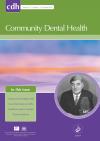Community Dental Health

- Cover Date:
- December 2016
- Print ISSN:
- 0265 539X
- Vol:
- 33
- Issue:
- 4
Payment systems and oral health in Swedish dental care: Observations over six years
Objective: The aim of this longitudinal study of patients in regular dental care was to compare the findings of manifest caries and fillings after a 6-year adherence to either of two optional payment models, the traditional fee-for service (FFS) model, or the new capitation model ‘Dental Care for Health’ (DCH). Material and methods: Data on manifest caries lesions, the number of fillings and a number of background variables were collected from both a register and a questionnaire completed by 6,299 regular dental patients who met the inclusion criteria. The influence of payment system adherence and background variables on the number of manifest caries lesions at study end was examined by the means of negative binomial regression analysis. Results: The incidence rate ratio of manifest caries lesions after
six years in FFS was 1.5 compared to DCH, after controlling for age, gender, education and pre-baseline caries incidence. The number of fillings was higher in FFS than in DCH at study start and at study end, and was also described by a steeper slope. Conclusions: At group level, this study showed a statistically significant difference between the caries situation after six years in DCH compared with FFS, when some important background factors, including pre-baseline caries, were kept constant in a regression model.
Key words: capitation, dental caries, fee-for-item, oral health, Sweden
doi:10.1922/CDH_3843Andas05
- Article Price
- £15.00
- Institution Article Price
- £
- Page Start
- 257
- Page End
- 261
- Authors
- C.A. Andås, M. Hakeberg
Articles from this issue
- Title
- Pg. Start
- Pg. End
- An intervention study to assess the effectiveness of a reminder telephone call in improving patient appointment attendance at a Community Dental Service clinic
- 239
- 241
- Patient characteristics in relation to dental care payment model: capitation vs fee for service
- 252
- 256
- Psychometric properties of the English version of the Oral Health Literacy Adults Questionnaire - OHL-AQ
- 274
- 280
- Approximal caries increment in relation to baseline approximal caries prevalence among adolescents in Sweden with and without a school-based fluoride varnish programme
- 281
- 285
- Variation in methods used to determine national mean DMFT scores for 12-year-old children in European countries
- 286
- 291
- The relationship between maternal smoking during pregnancy and parental-reported experience of dental caries in Indigenous Australian children
- 297
- 302
- Dental problems and Familismo: social network discussion of oral health issues among adults of Mexican origin living in the Midwest United States
- 303
- 308
